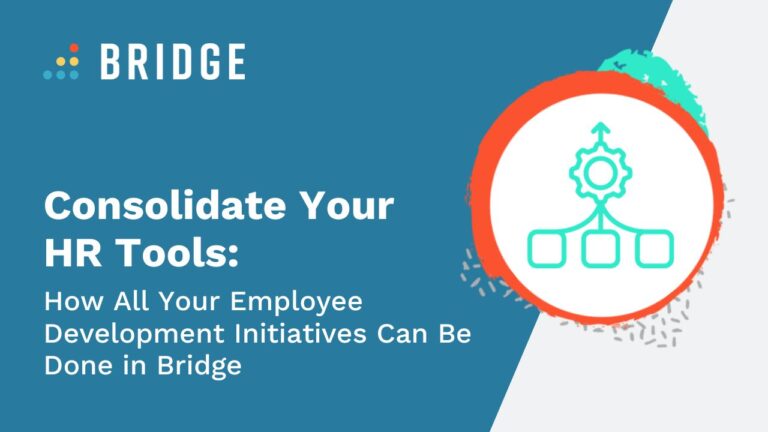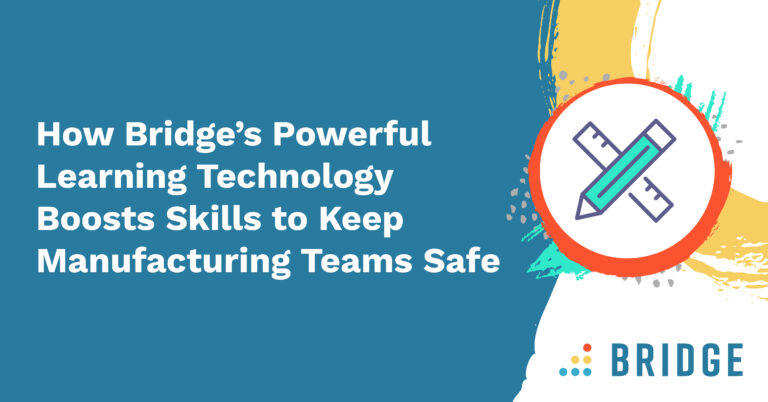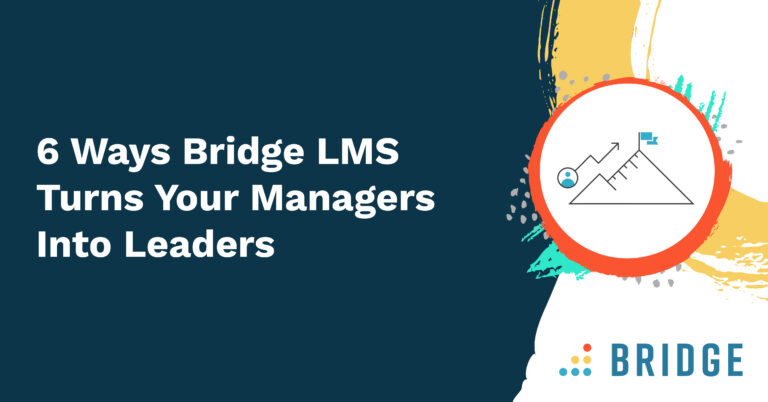Consolidating your HR tech can be a fantastic way to improve your employee development initiatives—as long as you’re consolidating the right tools in the right way. Discover the benefits of a one-platform approach to learning and performance management.
As you survey your HR tech stack, you may find that your organization is awash with an array of tools, platforms, and applications. According to one report, larger organizations hold an average of 211 apps apiece—and it’s likely that HR tech features prominently among any organization’s avalanche of applications.
That’s the view of industry analyst Josh Bersin, at least. In an episode of his podcast from September 2023, Bersin claims to regularly encounter organizations with between 80 and 100 HR- and L&D-related tools. You don’t have to be a noted analyst to recognize that this is far too much tech for any employee to reasonably navigate. Plus, Bersin also points out that each tool or platform is likely to hold disparate pieces of data that need to be brought together in order to achieve meaningful workforce insights. In other words: it’s time to consolidate.
Rather than maintaining several different platforms, like a standalone learning management system (LMS), performance management system, and analytics tool, you’ll find your employee development efforts far more successful when you combine these technologies under one roof. That’s the power of Bridge.
So, what are the practical advantages of bringing together learning and performance? What do those advantages look like in action? And how can Bridge help you achieve them? Let’s find out.
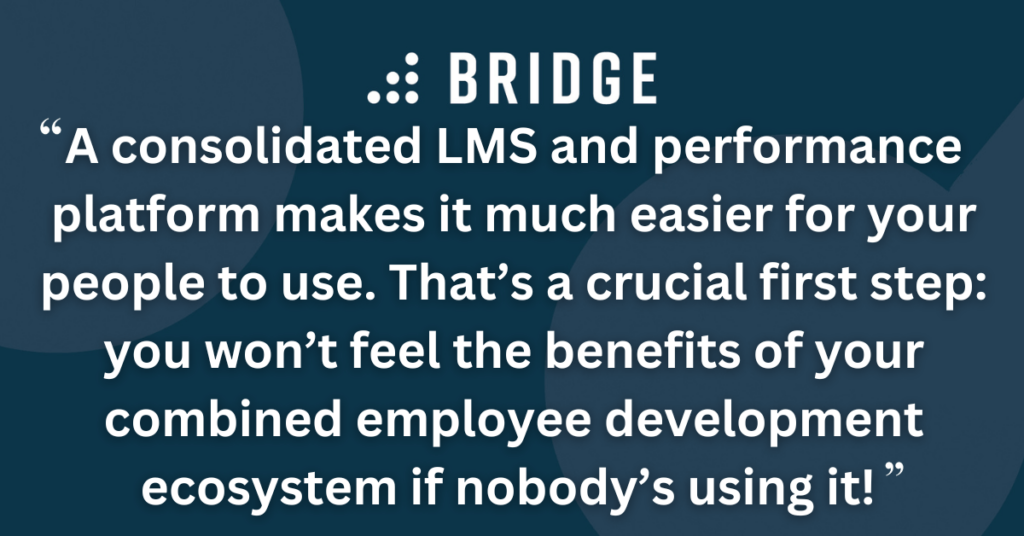
How Does Bridge’s Consolidated Platform Help With Employee Development?
Learning and performance are the two sides of the employee development coin.
Good performance management lends shape and direction to your workers’ development by offering opportunities for goal setting, feedback on progress, and in-depth reflections and reviews.
Good learning infrastructure, meanwhile, is the engine that propels your people toward their goals and allows them to achieve the progress set out by their performance plans. If they can’t learn new skills or practices, your people aren’t likely to see many performance improvements.
That’s why Bridge provides learning and performance management as a single, all-in-one offering. This is what good consolidation looks like: a combined set of learning and performance capabilities powered by a single platform with a shared set of information and a seamless intermingling of features. For an added layer of cohesion, you can go on to integrate Bridge with your HRIS—but to maximize the employee development benefits of a unified platform, your performance management system belongs with your LMS.
Crucially, a consolidated LMS and performance platform also makes it much easier for your people to use, and for your managers to get something useful out of it. That’s an essential first step: you won’t feel the benefits of your combined employee development ecosystem if nobody’s using it!
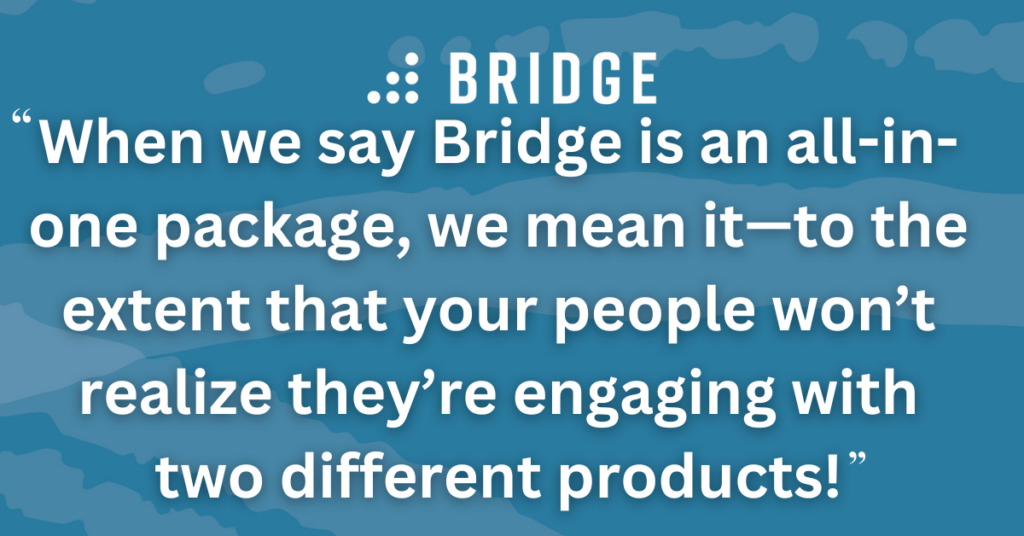
It’s Easy To Use
In his discussion of consolidation, Bersin points out that a key drawback of using too many HR and L&D systems is that some employees simply won’t be able to navigate them. When you’re juggling a variety of L&D systems, it’s easy for workers to find themselves lost in a mess of tangled passwords and unfamiliar UIs.
While this is something to watch out for across all of your tech stacks, the stakes surrounding off-putting complexity are particularly high in the L&D space. Why? Because learning and performance can often be seen as optional or less important undertakings that are allowed to fall by the wayside when work gets busy. When L&D is already viewed in that light, the last thing you need is for your employees to be confronted with a confusing ecosystem of unrelated software.
Clearly, there’s value in a consistent employee development experience. That’s why Bridge’s learning and performance products operate within exactly the same interface. One login allows learners to access every aspect of their development toolkit, and (if any help is ever needed) the same support team serves both sides of the L&D coin.
When we say Bridge is an all-in-one package, we mean it—to the extent that your people won’t realize they’re engaging with two different products!
MORE ON PERFORMANCE | ‘How to Create a Performance Management Plan’
Data Is In One Place
Consolidation isn’t just handy for improving employees’ experience of L&D—it also enhances managers’ interactions with the function too. Managers can’t properly guide or direct performance improvements unless they have a complete picture of their employees’ progress, and it’s hard to assemble that picture from fragments of data scattered across your L&D infrastructure.
With Bridge, managers have access to all the information they need to guide their reports through the employee development process, from the courses each individual has completed to the goals they have set.
These insights are made easier to access and understand with the help of Bridge’s in-depth analytics dashboard. This even-handed feature speaks to the spirit of consolidation at the heart of Bridge’s offering. It’s equally adept at supplying learning-related data (like course completion rates) and performance-related reporting (like tracking the frequency of 1:1 meetings).
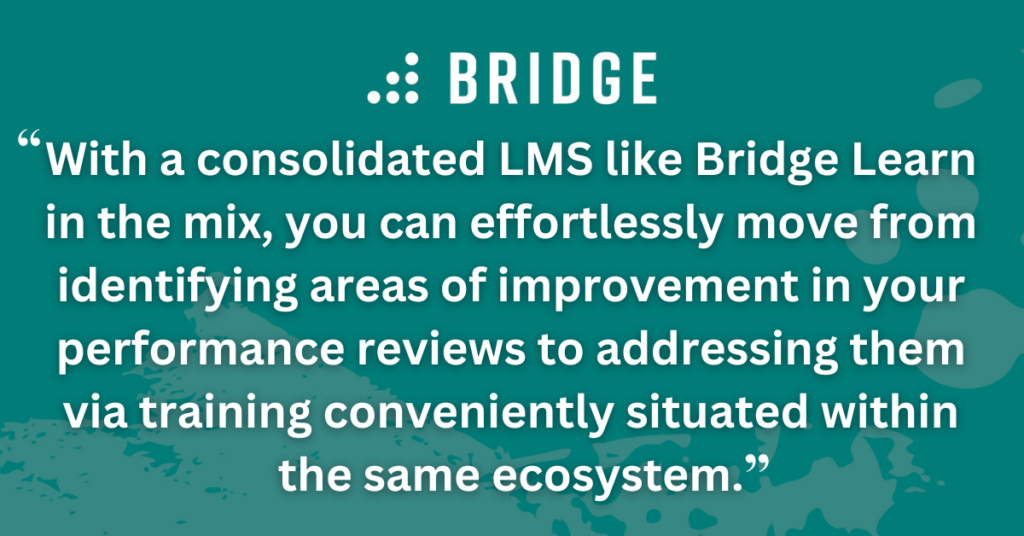
What Does Consolidated Learning and Performance Management Look Like in Action?
Clearly, there’s plenty of overlap between learning and performance management—but how does an all-in-one approach work in practice? What does it look like when Bridge combines the power of its LMS and its performance management system?
We’ve put together a couple of examples for two scenarios: employee onboarding and performance reviews. Infusing these common processes with the consolidated power of learning and performance management highlights the value of bringing both components together in one handy location.
Create a Comprehensive Onboarding Program
Employee onboarding is a many-sided process with an array of aims that only an all-in-one platform can satisfy.
On the one hand, onboarding involves training your people on information including:
- Compliance requirements
- Company history
- Essential policies
For this, you’ll naturally want an LMS capable of housing courses on each subject. Bridge’s LMS comes with the added bonus of automated learning pathways called Bridge Journeys, a feature that allows you to deliver training at sensible intervals and across a variety of formats.
On the other hand, onboarding isn’t just about participating in training courses. There’s a whole other side to the process which involves getting to know peers, acclimating to a new culture, and forging those all-important connections with managers.
That’s where a consolidated performance management system comes into play. When you’ve got Bridge Learn and Bridge Perform on your side, it’s simple to add performance-related steps to your automated onboarding pathways like scheduled 1:1 meetings and requests for start/stop/continue feedback.
With both learning and performance management working in cohesion through Bridge Journeys, you’ll allow your new hires to put their best foot forward as they simultaneously acquire essential knowledge and make connections with new colleagues.
RELATED READING | ‘5 Ways to Achieve Better Employee Onboarding With Bridge Journeys’
Conduct Stress-Free Performance Review Cycles
It might be tempting to assume that performance reviews (as their name suggests) are solely the province of a performance management system—but that’s not the case!
Of course, it goes without saying that Bridge Perform plays a huge part in facilitating performance reviews. With its reminders and templated conversation structures, Bridge Perform ensures that employees and managers have frequent 1:1 meetings that lead to a better-informed performance review. It’s also great for soliciting an array of feedback types which, again, add vital context on worker progress for managers looking to get a well-rounded overview of their reviewees. But a good performance review doesn’t stop there.
After all, the goal of a performance review, and of performance management more generally, isn’t just to measure employee performance. The primary goal is to improve performance, and a performance review doesn’t achieve that goal in isolation. Instead, the process signposts areas that employees can work on in order to improve—and those areas often require skills development which is only possible via learning.
With a consolidated LMS like Bridge Learn in the mix, you can effortlessly move from identifying areas of improvement in your performance reviews to addressing them via training conveniently situated within the same ecosystem. In Bridge’s case, you can go one better with the Skills Plus add-on: an AI-powered upskilling platform that automatically tags courses with the skills they teach, making it even easier to direct employees to the appropriate resources.
SEE BRIDGE’S ALL-IN-ONE ADVANTAGES IN ACTION | ‘Revolutionizing Employee Development and Performance to Achieve a 97% Staff Retention Rate’
Consolidate Your HR Tools With Bridge Learning and Performance Management
Streamline your HR tech stack by combining the most important elements of employee development in one place. Enjoy unparalleled cohesion between your LMS and your performance management system, ensuring that your learners can understand how they need to develop and access the resources that help them on their journeys. Request a demo or get a free trial to enjoy Bridge’s best-of-both-worlds approach today.
